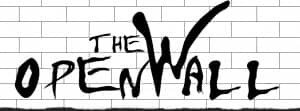What is an “Open or Breathable” Wall System?
Breathing Walls offers practical alternatives to conventional modern building practices that keep homes airtight. Walls built today are energy-efficient but cannot handle the inevitable intrusion of moisture, resulting in mold, ill health for occupants and structural damage. Instead of “build tight, ventilate right,” we say make your envelope “waterproof but vapor permeable.”
We work with, not against, the forces of nature.
from www.BreathingWalls.com
 “Build tight, ventilate right,” is what we do today, but what if moisture gets into the wall due to water leakage, improperly sealed electrical outlets, holes in the wall from hanging pictures etc? What happens to that moisture? In a typical wall assembly any moisture that infiltrates the wall will become trapped by the poly and the building wrap. The drying cycle can be very long and before the wall cavity can dry, mould and mildew have started to form in the insulation and on the wood studs. Mould and mildew in walls is obviously not good for you or the structure of the building.
“Build tight, ventilate right,” is what we do today, but what if moisture gets into the wall due to water leakage, improperly sealed electrical outlets, holes in the wall from hanging pictures etc? What happens to that moisture? In a typical wall assembly any moisture that infiltrates the wall will become trapped by the poly and the building wrap. The drying cycle can be very long and before the wall cavity can dry, mould and mildew have started to form in the insulation and on the wood studs. Mould and mildew in walls is obviously not good for you or the structure of the building.
A good open wall concept is all about what materials you use in your wall assembly. In short, it is about the vapour permeability of those materials, the amount of humidity that can be stored (temporarily) in them and insuring that how they are arranged does not create a dew-point within your wall assembly.

The dew-point is the temperature that will cause vapour in the air to condense into water droplets. It’s very important in any wall assembly to ensure that the temperature within the wall never reaches the dew-point not allowing condensation to occur.
The Glaser Diagram (opposite & in German) shows the dew-point (Taupunkt, in blue) is not even close to the actual temperature (in black) within the TrappeurHomes wall assembly.
 Here is how we create our “open or breathable” wall:
Here is how we create our “open or breathable” wall:
(from left to right)
- 1”x12” white pine interior finishing or drywall
- ProClima Intello – Intelligent High-Performance Vapor Retarder
- 2”x4” framed wall for Roxul batt insulation
- 1.5” inch 100% recycled Wood Fiberboard Panel
- 5” x 10” white pine Bondu dovetail logs (bearing wall)
The wood fibreboard and the pine log walls are natural materials that have a high moisture storage capacity and high vapour permanence. If there is a bulk intrusion of vapour into the wall assembly, these materials can safely absorb it and allow it to escape to the outside.
In our opinion, the “open or breathable” wall assembly is a key component in designing and constructing today’s healthy buildings.
